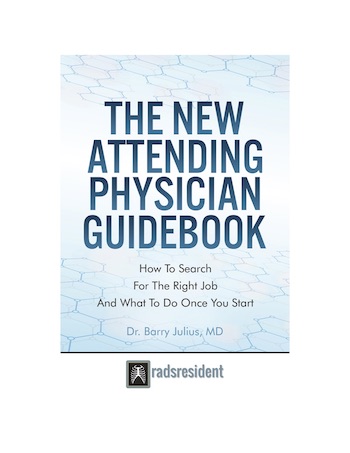
Question About Curriculum And Teaching In United States And Abroad:
Hello Barry,
Thank you for your outstanding posts and the constant stream of current topics promoting the dissemination of Radiology as both a profession and a collective guild. I’ve been hanging on every word you’ve written, and it’s almost as if you anticipate my questions in advance. So, I am very much encouraged by the relevancy of your blogs and posts.
I am a Canadian who is a first-year diagnostic radiology resident in Targu Mures, Romania. Here, we follow a five-year path outlined by the EU and the European Society of Radiology (ESR). The problem is that the actual ” teaching ” element is virtually non-existent, and the program expects us to follow or shadow senior residents all day and read on our own. I am lost and overwhelmed by all the modalities I see here daily. For example, a typical day involves spending a few hours in an ultrasonography clinic, seeing conventional or plain film radiography cases, and a CT or MRI following a patient scan.
Most often, the radiologists on staff consult with other physicians, and it’s not like they have the time to point out things. I’ve decided to follow a structured plan and would appreciate your curriculum. What should I cover in my first two years? I know I’m asking a lot of you. Perhaps you can abbreviate your own institution’s plan for me? The first thing I’ve begun to do is revisit skeletal anatomy, including the head and neck. I don’t have a lot of textbooks here (in English, that is), but I have a ton of PDF books on my PC. This lack of physical textbooks is another problem because I miss the tactile experience of actual texts, and looking at a laptop all day is tiring. I will digress and hope to hear from you. Take your time 🙂
Sincerely,
A Tired Romanian Resident
————————-
Answer:
Thanks for the great compliments. It is much appreciated and makes writing these posts all worth it!
Teaching Differences
Interestingly, you mention that teaching is “non-existent” in Romania. It’s almost the opposite problem in the United States, where everything seems regulated by the government. We need to have x number of noon conferences, etc. I almost wish we had a model for teaching somewhere between the Romanian and the United States models. Residents seem to get bogged down by the regulations and spend less time learning by reading films. (It’s an essential ingredient for radiology!!!!) So, in a sense, you can consider yourself lucky, but you are also missing out on some types of the more didactic teachings.
Curriculum
Regarding the curriculum, the plain vanilla answer is that residents study all the material on the ABR website under the core study guide. It would help if you looked at that to understand everything you theoretically need to know. However, I find it a bit overwhelming, and you need to focus on studying for your time as a resident. So, in the real world, I recommend reading some of the basic overall books in each modality when you begin a rotation each month, such as Mettler for nuclear medicine and the requisite series for some other subjects. You can check out some of the curriculum and books on the web in U.S. Residency programs to get an idea of what you need to know and the books they use. You can also look at some of the books my residents like in the book links section of radsresident.
Most importantly, emphasize the pictures and captions and then secondarily look at the text to understand the images and captions. And keep in mind the ABR blueprints and core material when you are studying. Subsequently, go through the case review series to learn how to go through cases once you have the fundamental knowledge of each primary modality. This process will reinforce all that you studied.
You also make an essential point about missing the tactile experience of textbooks and looking at laptops. It happens to be the subject matter of my next article!!! PDF articles are great because you can download them easily. On the other hand, retention rates for PDFs are probably not as high as reading directly from a printed textbook.
I hope this helps a bit,
Barry Julius






